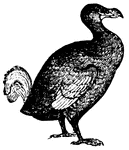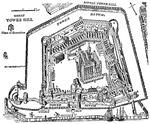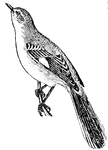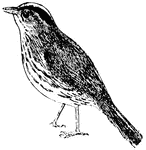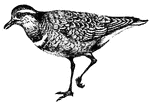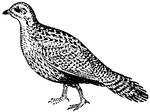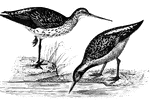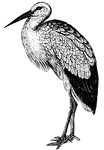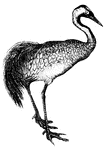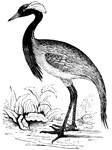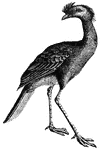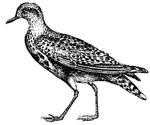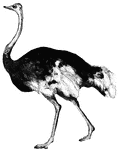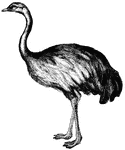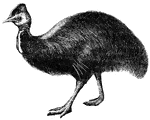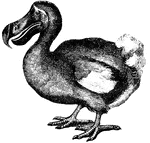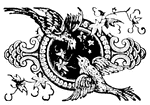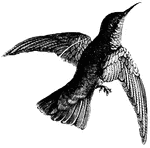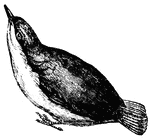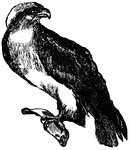
Osprey
This bird lives on fish so is commonly found near water. Its nest is composed of sticks, seaweed, and…
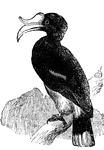
Hornbill
The hornbill family are remarkable for the very large size of the beak, and the large protuberance that…

Waxwing
This bohemian waxwing has more plumage than the typical Cedar waxwing of the U.S. Waxwings have a red…

Flying Fish
The Flying Fish is enabled to fly by having fins which approach in extent the wings of a bird, (Hooker,…

Lyre bird
Lyre-bird, an Australian bird, the male of which has the tail feathers arranged to look like a lyre.
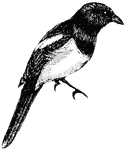
Magpie
A bird of the crow family, closely related to the jays but distinguished by having a much longer and…
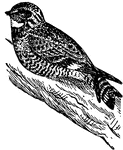
Nighthawk
An American insect-catching bird related to the whip-poor-will, a member of the goatsucker family.
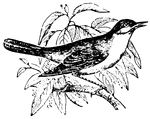
Nightingale
Nightingale, a bird famous on account of its brilliant song, which for quality and variety is not exceeded…

White-breasted Nuthatch
Nightingale, a small creeping bird seen running up and down the trunks of trees, getting its name from…
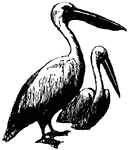
Pelican
Pelican, a water bird with webbed feet and a long bill having a pouch on the under surface. The upper…

Loon
The loon is a diving bird that finds its food under the water. It will dip its bill into the water and…
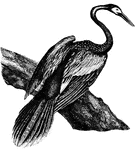
Anhinga
The head of the anhinga is slender and cylindrical, on a slim and excessively long neck, which makes…
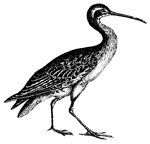
Curlew
These birds are characterized by their curved beaks. Their food consists of insects, worms, slugs, aquatic…
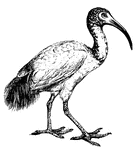
Sacred Ibis
Wading birds with long, slender bills found in warmer climates of both hemispheres. The Sacred ibis…
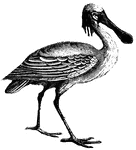
Spoonbill
The bill of the spoonbill is approximately four times longer than its head. It ends in the shape of…
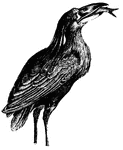
Boatbill Heron
This heron has a bill like an overturned boat. It also has a beautiful black crest that falls down behind…

Heron
Herons are found on the edges of rivers, lakes and marshes and live on fishes, reptiles and sometimes…

Oystercatcher
Oyster-catchers are noisy birds. The bill is powerful for opening mussels, oysters and other shell-fish.
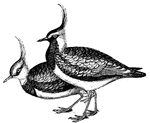
Lapwing
Lapwings may often be seen settling in fields recently ploughed, where they can find an ample supply…
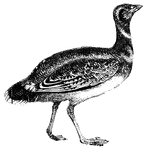
Bustard
Bustards are stocky birds with strong legs. They fly with difficulty, and do not fly unless necessary.
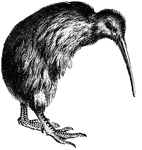
Kiwi
The Kiwi, a native of New Zealand is closely related to the Ostrich but much smaller. It is also a flightless…

Ruffed Grouse
The ruffed grouse is an American bird that likes hill-sides densely covered with evergreens or birch.
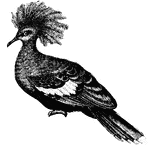
Great-crowned Pigeon
The plumage of this bird is of a beautiful grayish blue; its head is ornamented with a pretty plume…
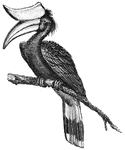
Hornbill
The hornbill family are remarkable for the very large size of the beak, and the large protuberance that…
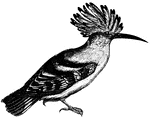
Hoopoe
The hoopoes are easily recognized from the double range of plumes which form an arched crest on their…
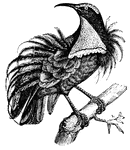
Epimachus
Little is known of this bird. Side-feathers develop in elegant panicles, while their plumage is brilliant…
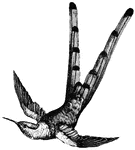
Bar-Tailed Hummingbird
The nest of the hummingbird is a masterpiece. It is about half the size of an apricot.
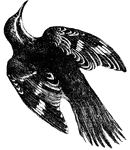
Creeper
The Creepers are small climbing birds which live and build their nests in the holes they bore in the…

Creeper
The Creepers are small climbing birds which live and build their nests in the holes they bore in the…

Creeper
The Creepers are small climbing birds which live and build their nests in the holes they bore in the…
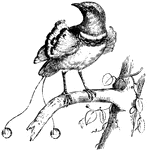
Bird of Paradise
Birds-of-paradise are brilliantly colored, many having tufts or wires that float on the breezes.
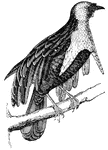
Bird of Paradise
Birds-of-paradise are brilliantly colored, many having tufts or wires that float on the breezes.
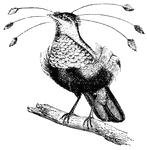
Bird of Paradise
Birds-of-paradise are brilliantly colored, many having tufts or wires that float on the breezes.

Raven
Ravens are sedentary birds, and never voluntarily abandon the place they have elected for their home,…
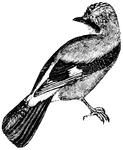
European Jay
The European Jay is brownish red tinged with grey. It has a patch of ultramarine blue banded with black…
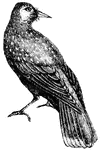
Nut-cracker Crow
The nutcracker has a straight bill for penetrating under the bark of trees in search of insects, (Figuier,…
